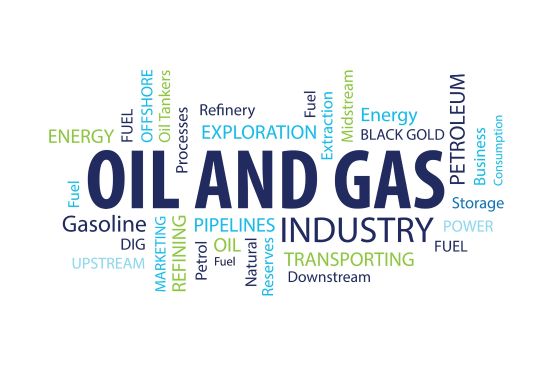Segments of the oil and gas industry
Upstream refers to exploration and production of crude oil and natural gas, midstream is the transportation and storage of crude oil and natural gas, downstream refers to the conversion of crude oil and natural gas into thousands of finished products.

Upstream
The term upstream refers to anything having to do with the exploration and production of oil and natural gas. Geologic surveys and any information gathering used to locate specific areas where minerals are likely to be found is commonly called exploration. Upstream also includes the steps involved in the actual drilling and bringing oil and natural gas resources to the surface, referred to as production.
Midstream
The midstream segment of the oil and natural gas industry refers to anything required to transport and store crude oil and natural gas before they are refined and processed into fuels and key elements needed to make a very long list of products we all depend on every day. Midstream also includes pipelines and all the infrastructure needed to move these resources long distances, such as pumping stations, tank trucks, rail tank cars and transcontinental tankers.
Downstream
The final sector of the oil and natural gas industry is known as downstream. This includes everything involved in turning crude oil and natural gas into thousands of finished products we use every day.
Some of the more obvious products are fuels like gasoline, diesel, kerosene, jet fuels, heating oils and asphalt for building roads.
But long-chain hydrocarbons found in both oil and natural gas are used to make far less obvious products like synthetic rubbers, fertilizers, preservatives, containers, and plastics for parts in countless products.
Oil and natural gas products are even used to make artificial limbs, hearing aids and flame-retardant clothing to protect firefighters. In fact, paints, dyes, fibers and just about anything that is manufactured has some connection to oil and natural gas.
Rate and Comment
Rate posts in the STAUFF blog with just one click or leave feedback and suggestions as a comment – without registration
The editorial team of the STAUFF blog appreciates feedback and suggestions. Accordingly, readers can now not only rate all posts, but also leave comments as guests without prior registration.
And it's that simple:
- Read or view the article.
- Scroll to the bottom of the page.
- Rate the post with just one click.
- Enter a comment.
- Submit your comment as a guest (only your name is required) or create a user account.
- After the comment has been reviewed and approved by the editorial team, it will be published online.
What do you think of this new feature?
Please share your opinion with us now using the rating and comments function!

Newsletter Subscription
Receive automatic e-mail notifications about new posts on the STAUFF Blog







